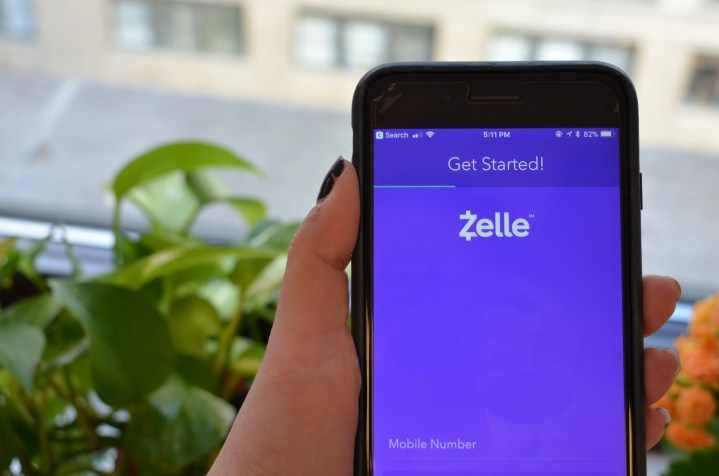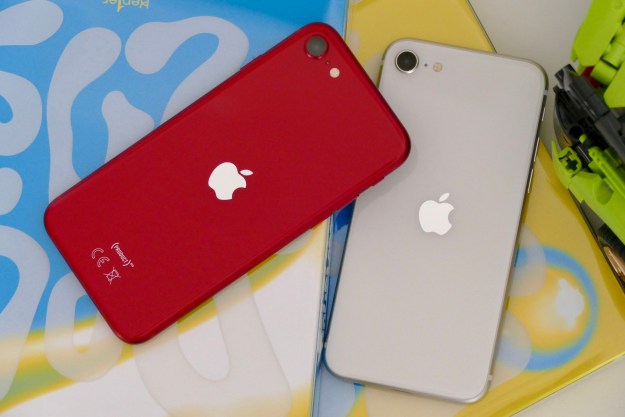App Attack is a weekly series where we search the App Store and Google Play Store for the best apps of the week. Check out App Attack every Sunday for the latest.
Ah, money — the one topic most people find extremely uncomfortable to talk about. Thankfully, it’s become easier than ever to send money back and forth via your smartphone this year. And this week, we have an app that will make it even more convenient.
Zelle is a payment service app that allows you to send money directly between most U.S. banks within a few minutes. The service first launched in June and, depending on which bank you have, you might’ve already seen it integrated into your banking apps. But Zelle is now its own stand-alone app available for download on iOS and Android.
After downloading the app, all you have to do is set up your profile by filling out your basic contact information, email address, and phone number. Lastly, you’ll be asked to add your Visa or MasterCard debit card (which can only be U.S. based, since Zelle won’t be able to accept international deposit accounts or debit cards). Within the app, you can send money, request it, or split a specific amount between a group and receive the money within minutes.
Zelle is currently compatible with over 30 different banks, such as Bank of America, TD Bank, PNC, and Wells Fargo, among others. Practically every bank on the list will allow you to use both the standalone app and the integrated app. Upon download, you’ll receive a message letting you know you can use either the Zelle app or through your mobile banking app.
Chase, on the other hand, has Zelle baked in. If you have Chase, Zelle will still notify you of the same message but will then take you to its official mobile banking app.
Then there’s BB&T, which doesn’t have the integration at all, leaving you with no other choice than to use the standalone Zelle app.
We know what you’re probably thinking — if each bank already has Zelle integrated into its app, than what’s the point of downloading it? With the standalone app, it’s only connected to your debit card, which means you’re restricted to transferring money from that one account. If you decide to use Zelle through your banking app, then it’ll give you the option to switch between different accounts like your Checking or Savings.
Linking to your debit card is also the reason Zelle is a lot less of a hassle when it comes to setting up your card through the app. With Venmo, you have to go through the process of adding your routing number on top of your debit card — and let’s be honest, who really has their routing number on hand?

Zelle also does a great job of making sure all of your information is secure. Similar to your banking app, you’ll be locked out for inactivity after a certain amount of time. It will then ask you to enter your password to log back in, or you can set up Touch ID for quicker access. If you forget your password, you can easily reset it after receiving a verification code. For extra security, you’ll also have to re-enter your three-digit CVV code in case the password is changed by someone else.
Another feature pulling Zelle ahead of other money transfer apps, such as Google Wallet and Square Cash, is the ability to receive the apps the money right away. Back in June, PayPal announced it was rolling out a feature where users could also send money in a matter of minutes. But it will cost you 25 cents to instantly transfer the money from your PayPal account to your bank account. While it doesn’t sound like a lot in theory, every cent counts for us millennials, especially with how common P2P become.
If you’re planning on trying Zelle — specifically because you want to send money instantaneously that day — you might want to plan ahead. The website does state that in order to verify bank accounts, it’ll take up to three business days. If the person you’re sending money to isn’t enrolled in Zelle, they’ll receive a text message or notification guiding them through steps to start their own profile.
When I tried it with a co-worker, I sent money from the app to his phone number and after two business days, it was still pending. But when I sent it to his email address instead, it was sent to his account right away. This could also be because he has Chase, however.
When you do send money, you can keep track of your transactions through the Activity tab. Within the section, it’ll show you pending payments as well as past ones as well. If you are planning on using Zelle to send money right away, try to plan ahead by sending money a few days earlier, just in case it requires all three business days to process. Once you’re verified, future money transfers should be instant.
Overall, the Zelle app is enough for me to delete any other payment services I’ve used in the past. I’ve depended on Venmo for the last few years, but having to wait one business day — let alone the entire weekend — isn’t ideal, especially if it’s a large sum of money. And I must admit that I will definitely miss scrolling through the Venmo newsfeed.
Zelle is as easy to navigate as any other app and all you need is your debit card. Even though it’s been integrated into my Bank of America app this entire time, it required logging in and taking a few extra steps. With the standalone app, all you need to do is log in, type in the amount of money, and send it over to your contact. I also appreciate Zelle doesn’t remind me of my bank account balance each time.









